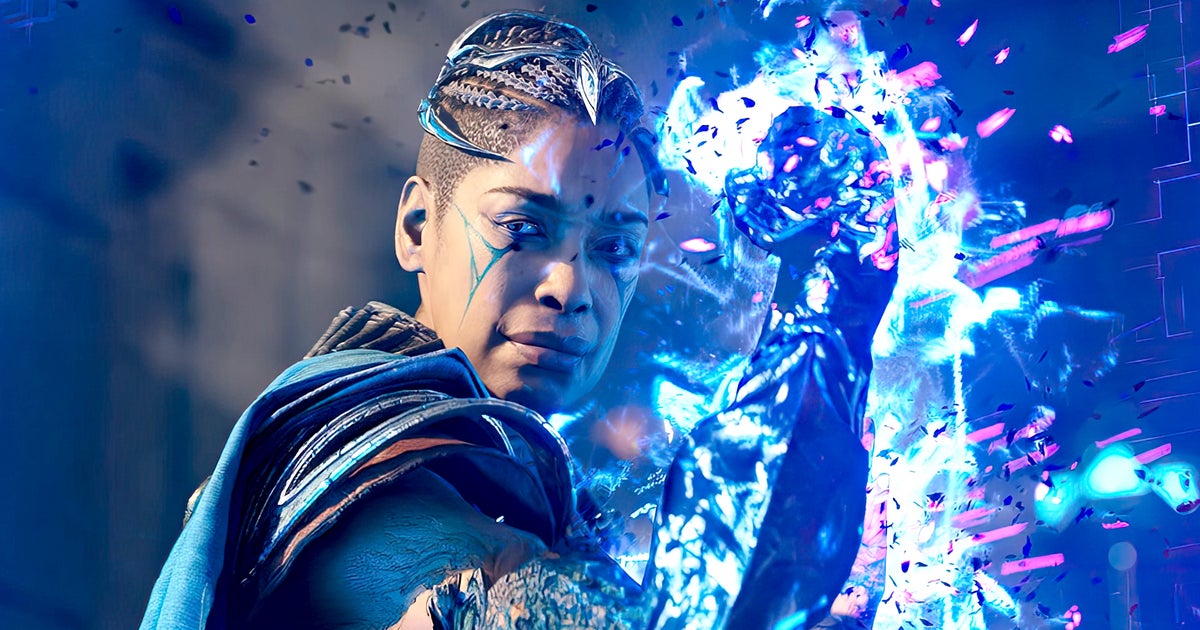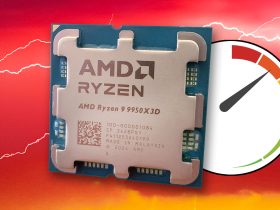The latest edition of DF Direct Weekly arrives today, discussing Red Dead Redemption’s 60fps upgrade for PlayStation 5 consoles, plus controversy surrounding Microsoft’s Forza Motorsport presentation – where debut media features ray tracing effects considerably more impressive than the shipping game’s. We also follow up on our recent coverage on AMD’s FSR 3 frame generation by seeing just how effective the technology is on console-equivalent hardware in the wake of Ascendant Studios suggesting that they’re looking into its application for Immortals of Aveum.
We’re on the record in expressing some degree of caution about frame generation on consoles, for all the reasons stated here. Essentially, frame generation has a computational cost of its own, so even if you have a game running at a rock-solid 60 frames per second, there’s no guarantee whatsoever that your frame-rate is amplified to 120fps. The same thing applies when considering a 60fps upgrade from 30fps, of course. On top of that, there are latency concerns (input lag will be worse) plus the issues we saw with frame-pacing in our first look.
However, I wanted to see what could be done potentially with FSR 3 for consoles and we have PC components that are very close, or at least ballpark, to console hardware. On the CPU side, we have the AMD 4800S Desktop Kit, which is literally the Xbox Series X CPU paired with 16GB of GDDR6 memory. We also have the non-XT version of the RX 6700, which in terms of RDNA 2 compute units and texture mapping units is eerily similar to the PlayStation 5 graphics core. We call this our ‘Frankenstein’s Console’ and with FSR 3 in Immortals of Aveum, there are some interesting results to share.
- 0:00:00 Introduction
- 0:01:25 News 01: 60fps Red Dead Redemption patch released on PS5
- 0:12:03 News 02: Forza Motorsport reaction – and what’s up with the game’s RT downgrade?
- 0:28:56 News 03: FSR 3: could it work on consoles?
- 0:43:42 News 04: Ubisoft adds Denuvo DRM to Assassin’s Creed Mirage post-release
- 0:51:20 News 05: Horizon Forbidden West to be first two-disc PS5 title
- 1:03:03 News 06: Intel Arc A580 budget GPU leaks
- 1:11:34 News 07: Nightdive mulling unofficial game enhancements
- 1:17:30 Supporter Q1: John, how was your trip to Japan?
- 1:32:08 Supporter Q2: Should Sony increase the internal storage on PS5?
- 1:34:26 Supporter Q3: If the Switch 2 uses DLSS at low handheld-class resolutions, will this hurt image quality?
- 1:37:30 Supporter Q4: What do you suggest to prevent OLED burn-in while gaming?
- 1:43:07 Supporter Q5: Can you end the show with ‘This Is Digital Foundry, bidding you farewell und auf wiedersehen’?
Let’s begin with the most obvious application – 120 frames per second gaming. Ascendant Studio targets 60 frames per second in Immortals of Aveum, though a recent patch introduced a hit to performance in favour of improved image quality. Even so, there is the scope for a 1080p120 presentation using FSR 3, which I tested using FSR 2 performance mode at low settings, upscaling from a native 540p. The result? Anything from 70fps to 100fps, settling on an average 90fps across my capture. There’s a potential application here then and perhaps a more bespoke implementation could improve those performance numbers. Even so, this would require VRR to work in order to be effective – and variable refresh rate support for FSR 3 on the PC side does not seem to work right now. These results falls into line with my expectations: we can’t hit 120fps because frame generation has its own computational cost.
The second test concerns using frame generation to hit 60 frames per second – and here’s where I was genuinely surprised. Part of the reason why frame-gen ‘works’ is that at high frame-rates, the lower quality ‘interpolated’ frames are strobed at high speeds with higher quality ‘native’ frames. It takes recurring issues across multiple generated frames to register image quality problems. However, if you’re targeting 60 frames per second, the generated frames persist for twice as long and therefore the issues are much easier to notice.
In this week’s DF Direct episode, you’ll see that FSR 3 frame-gen actually holds up very, very well at 60 frames per second, running with FSR 2 balanced mode at an 1800p output (quality mode dropped too many frames for my comfort). Bearing in mind that aggressive FSR 2 upscaling doesn’t look great, the ability to ‘mix and match’ with FSR 3 frame generation could actually increase quality. Frame-gen reduces the need to generate so many native frames and in return, FSR 2 quality levels could rise.
In terms of intrusive artefacts, in Immortals of Aveum at least, it’s only really the half-rate update on UI elements that really sticks out. Those 30fps elements are actually a stark reminder of the ‘native’ frames you’re seeing, so juxtaposed against the 60fps output, it makes the quality of the final presentation all the more impressive.
So, are we looking at a 60fps console nirvana thanks to FSR 3? There are two problems. Firstly, frame generation does incur a latency penalty. I found an area in Immortals of Aveum that I could run at 60fps with frame-gen off, then ran input lag measurements with FSR 3 on and off. Without frame-gen, we got an alarmingly high (for a 60fps game) 95.2ms. Engaging FSR 3 bumped that up to 122.7ms – a 27.5ms increase to overall lag. That’s with Radeon AntiLag enabled.
To see how 122.7ms compares to a range of 60fps games, I’ve embedded below a table of latency measurements Tom Morgan took back in the day across a range of console titles running (mostly) at 60fps. These are for PS4 era games, but I’d expect similar numbers to persist into the current generation. The conclusion you may draw is that a frame generated 60fps experience would be lucky to match the input lag of a 30fps game.
| Title | Input Lag | Target Frame-Rate |
|---|---|---|
| Call of Duty: Infinite Warfare | 39.3ms | 60fps |
| Call of Duty: Modern Warfare Remastered | 40.3ms | 60fps |
| Battlefield 1 | 56.1ms | 60fps |
| Halo 5 | 63.0ms | 60fps |
| Battlefield 4 | 63.7ms | 60fps |
| Titanfall 2 | 60fps | |
| Overwatch | 76.8ms | 60fps |
| Doom 2016 | 86.8ms | 60fps |
| Killzone Shadowfall Multiplayer | 89.8ms | 60fps |
| Killzone Shadowfall Single-Player | 110.0ms | 30fps |
The second challenge is – once again – the fact that FSR 3 has a computational cost. I required a base frame-rate in the region of 40 frames per second to achieve something close to a locked 60fps with frame-gen enabled. In this scenario, I’d be tempted to opt for a 40fps cap in a 120Hz container – as seen in titles like Ratchet and Clank and A Plague Tale: Requiem. However, with that said, that’s not necessarily an option for a majority of users, who may not have access to a 120Hz display.
In conclusion, I’m still of the opinion that FSR 3 is not a cure-all for consoles that would make all 30fps games run at 60fps, or 60fps titles run at 120fps. However, there are obvious applications where the technology could be useful. First of all, for lower impact games that already run at 60fps just fine on consoles, there may well be the overhead left over to bump up performance well into high refresh rate territory – though I’d really like to see VRR working here to ensure a smooth experience. The second potential application would be in delivering more 60fps games, with the proviso that (once again) a good degree of GPU overhead would be required and that response time will be compromised.
Whichever way you slice it, what we have here is another tool available to developers. Quite how it can be meaningfully deployed remains to be seen – but as it’s part of AMD’s GPUOpen initiative, there’s nothing stopping game makers customising it. Beyond that, if Immortals of Aveum on consoles does receive a frame generation upgrade, I can’t wait to see it bearing in mind the results I saw in my own testing.
fbq('init', '560747571485047');
fbq('track', 'PageView'); window.facebookPixelsDone = true;
window.dispatchEvent(new Event('BrockmanFacebookPixelsEnabled')); }
window.addEventListener('BrockmanTargetingCookiesAllowed', appendFacebookPixels);












Leave a Reply